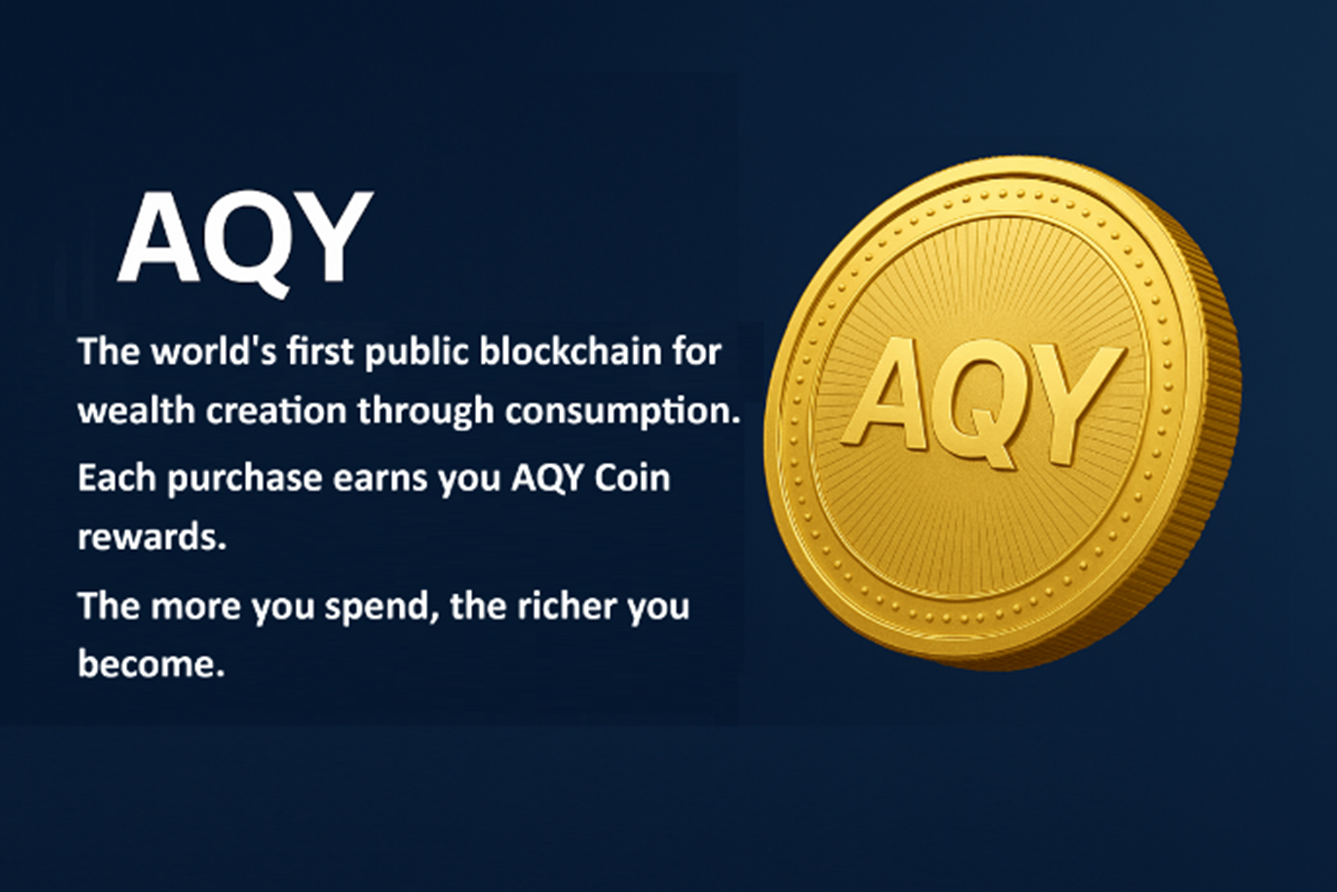Mainstream Public Chain Comparison
While mainstream public chains like Bitcoin (BTC), Ethereum (ETH), and Solana (SOL) have achieved initial success, they still face significant technical and economic model bottlenecks when it comes to commercial-scale applications, especially high-frequency payment scenarios


The Value Proposition of AQY Coin
Unlike mainstream tokens such as BTC, ETH, and SOL, AQY’s existence is not based merely on faith or speculation
This “consumption-driven AQY rewards + transaction profit USDC fund pool” dual-currency model creates a token economy with both commercial cash flow and a value anchor

Motivation
Every consumer transaction from the F2C system automatically generates a profit margin that becomes the platform’s motivation to purchase AQY. This AQY is then used to build the liquidity pool in the DEX
Stability
These liquidity pool funds serve as a stable anchor for the value of AQY, preventing dramatic price fluctuations
Appreciation
When the price of AQY rises, all participants in the F2C ecosystem—including consumers, merchants, referrers, and agents—benefit simultaneously

Sending Payments
AQY is the Infrastructure Public Chain for the “Chain Business Era”
If BTC is considered the digital gold for value storage and ETH is the operating system for smart contracts, then AQY Blockchain is the value highway for on-chain commerce
Isolated public chains, each operating independently
Fragmented applications, duplicate token issuance, and decentralized consensus
Every blockchain experience feels like a technical hurdle, leaving true widespread adoption elusive
Why the World Needs a Global Coordination Layer
Blockchain no longer lacks speed, functionality, or capital. What it lacks is coordination power. That is, the ability to integrate value and redistribute consensus across applications, industries, and regions. We are moving from a “tool chain” to a new era of “sovereign chain.”
AQY Coin and AQY Blockchain emerged precisely to address this ecosystem-wide dilemma. It wasn’t created for a single application, nor was it built solely for DeFi or GameFi. It is a protocol layer capable of supporting an entire decentralized civilization, a chain that allows for the free flow of value.
One chain, one coin, universal coin
A true network effect exists when all applications share a common value layer.
Blockchains are order, not just technology
Technology cannot solve profit sharing and incentives. Only collaborative order can enable the network to grow spontaneously.
Sovereignty belongs to contributors
Incentives should flow from behavioral contributions and node participation, not advertising, not taxation, not monopoly.
The Starting Point of Blockchain Business Civilization
What we are building is not just a blockchain; it is the backbone of the Web3 business order for the next decade.
Market Opportunity & Competitive Landscape
The Web3 ecosystem’s original purpose was to achieve “decentralized collaboration,” but in reality, it has fallen into the following dilemmas:
- ⛓ Multiple chains operating in parallel fragment resources and communities
- 💰 Each project issues its own token, diluting value
- 🧱 Incompatible protocols prevent true integration
- 🧩 Each application is like an “island,” preventing user engagement and consensus from forming
This phenomenon of “multiple chains and multiple tokens” and “fragmented ecosystem” has led to inefficiencies, high trust costs, and the stagnation of network effects, hindering Web3’s transition from early experiments to true commercial development.

